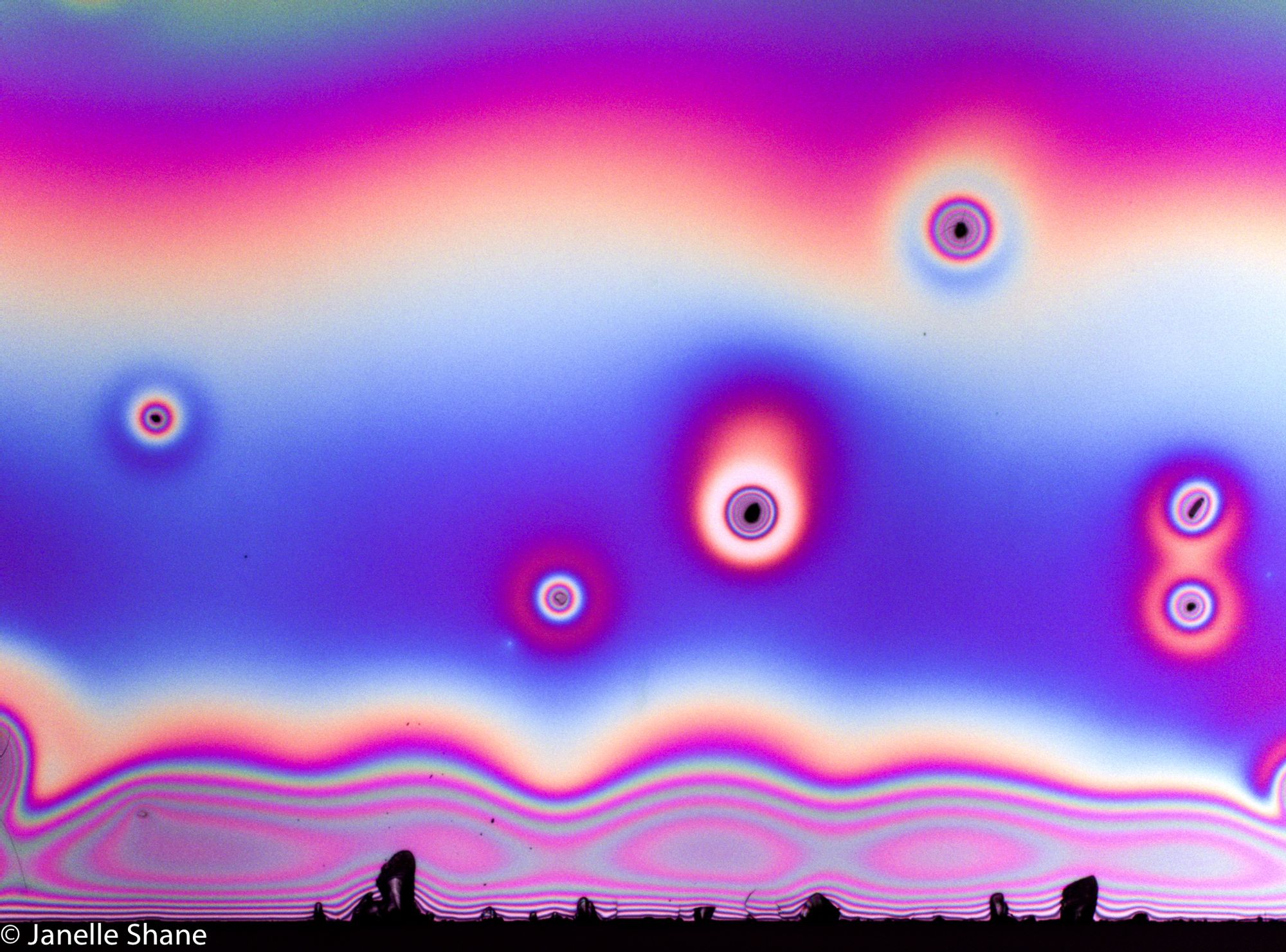Monday May 19, 2014

A strange landscape with an even stranger sky.
This is a microscope view of the edge of a smooth chunk of silicon, coated with a thin clear plasticy layer of photoresist. Just like the colors in a soap bubble, this colorless thin layer produces rainbow colors due to the wave nature of light. Waves of light reflecting off the top and bottom of the film interfere with each other and add to each other’s brightness, or cancel each other out, depending on the film’s thickness. Since each color of light corresponds to a wave of different size, at different film thicknesses you get different colors of light disappearing from the spectrum as they cancel each other out.
The film above has areas where the surface is relatively smooth (areas with very widely spaced bands of color). Where the film mounds up near its edges or near the black dust specks, the colors change rapidly along with the film’s thickness. Nonuniform films like these are usually used just to protect a material’s surface between fabrication steps. To use the film for material processing, the nonuniformities - and with them the rainbow colors - would need to be removed.


